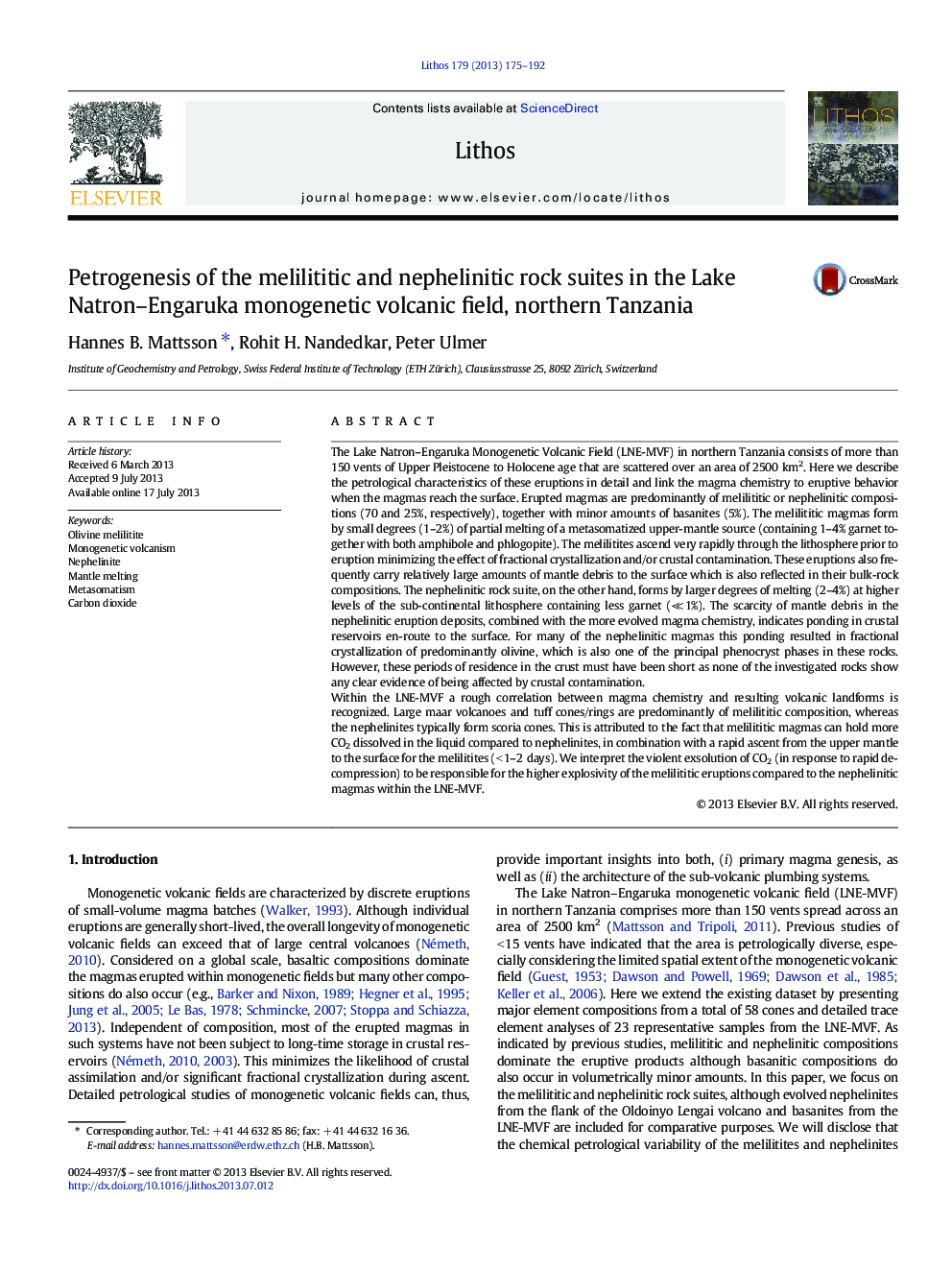| کد مقاله | کد نشریه | سال انتشار | مقاله انگلیسی | نسخه تمام متن |
|---|---|---|---|---|
| 4716211 | 1638686 | 2013 | 18 صفحه PDF | دانلود رایگان |

• Melilitites form by low degrees of partial melting of a metasomatized mantle source.
• The nephelinites have evolved by minor fractional crystallization.
• A connection exists between magma chemistry and the explosivity of the eruptions.
The Lake Natron–Engaruka Monogenetic Volcanic Field (LNE-MVF) in northern Tanzania consists of more than 150 vents of Upper Pleistocene to Holocene age that are scattered over an area of 2500 km2. Here we describe the petrological characteristics of these eruptions in detail and link the magma chemistry to eruptive behavior when the magmas reach the surface. Erupted magmas are predominantly of melilititic or nephelinitic compositions (70 and 25%, respectively), together with minor amounts of basanites (5%). The melilititic magmas form by small degrees (1–2%) of partial melting of a metasomatized upper-mantle source (containing 1–4% garnet together with both amphibole and phlogopite). The melilitites ascend very rapidly through the lithosphere prior to eruption minimizing the effect of fractional crystallization and/or crustal contamination. These eruptions also frequently carry relatively large amounts of mantle debris to the surface which is also reflected in their bulk-rock compositions. The nephelinitic rock suite, on the other hand, forms by larger degrees of melting (2–4%) at higher levels of the sub-continental lithosphere containing less garnet (≪ 1%). The scarcity of mantle debris in the nephelinitic eruption deposits, combined with the more evolved magma chemistry, indicates ponding in crustal reservoirs en-route to the surface. For many of the nephelinitic magmas this ponding resulted in fractional crystallization of predominantly olivine, which is also one of the principal phenocryst phases in these rocks. However, these periods of residence in the crust must have been short as none of the investigated rocks show any clear evidence of being affected by crustal contamination.Within the LNE-MVF a rough correlation between magma chemistry and resulting volcanic landforms is recognized. Large maar volcanoes and tuff cones/rings are predominantly of melilititic composition, whereas the nephelinites typically form scoria cones. This is attributed to the fact that melilititic magmas can hold more CO2 dissolved in the liquid compared to nephelinites, in combination with a rapid ascent from the upper mantle to the surface for the melilitites (< 1–2 days). We interpret the violent exsolution of CO2 (in response to rapid decompression) to be responsible for the higher explosivity of the melilititic eruptions compared to the nephelinitic magmas within the LNE-MVF.
Journal: Lithos - Volume 179, 1 October 2013, Pages 175–192